Crib Safety
Babies spend most of their time asleep during the first weeks of their lives, albeit in smallish increments. In fact, until around six months of age, you can expect your little one to be snoozing for anything up to fifteen hours during any one twenty four hour period. That’s a lot of time to spend in bed!
Making sure that baby’s sleep environment is suitable is obviously a priority, from both a safety perspective and a healthy one. To make it easier for you to create this perfect sleeping space we have put together a few tips which will help you to make the right choices from the start.
New or Used
There can be a number of reasons why a pre-used crib may seem like a great idea:
- Sentimental reasons – your mother may have kept your crib for years in order to create a family heirloom for you to use on your precious new arrival.
- Financial constraints – used cribs are often found for sale cheaply and new ones can be expensive.
Before heading down the pre-used route there are a number of safety factors to consider:
- There have been many advances in crib safety in the previous ten years alone, both in crib structure and mattress safety. All new cots sold in the UK must meet European Safety Standards and should carry the British Standards Institution (BSI) number BS EN 716:2008. This code indicates that they comply with the current required safety standards. Check any purchase, new or used, for this code.
- If you are still inclined towards using an older model always check:
- That any paint used does not contain lead (as in very old models).
- If they are made of wood or metal, the distance between the bars must be small (less than 6cm apart) so that even a very tiny baby cannot get their head or limbs caught between.
- All parts should be in perfect working order with no loose or missing pieces and no splits or cracks. Check for any protruding screws and make sure all screws are firmly fixed and not missing.
- Some cribs have headboards and footboards with decorative cutouts. Make sure these are also too small for a baby to get caught, either with fingers and toes or clothing.
- Check that the sides latch securely and cannot be released by the child as they get older.
- The mattress should be replaced ideally. If this is impractical always check the following:
- That the current mattress fits snugly in the crib. Babies can get trapped in gaps.
- The mattress should be cleaned thoroughly and have no tears, cracks or holes in the fabric.
Basic safety
Whether you buy new or use a pre-owned crib there are some basic safety tips to ensure that your child is safe:
- The safest possible place for your baby to sleep is in a well assembled and quality crib. Allowing your baby to sleep in your bed is extremely risky. You could roll over onto the baby or the baby could roll over and fall onto the floor.
- Place baby on their back to sleep, unless otherwise advised by a qualified health worker.
- The mattress should be firm rather than soft. Squishy mattresses may look cosy but they could pose a suffocation risk.
- The sheet should fit tightly over the mattress. Never use an oversize sheet which could become untucked and cover baby.
- Never keep soft toys, blankets and pillows in the crib for the same reasons as above.
- Remember that babies do not remain immobile for very long:
- Never place the crib near windows, particularly once your baby can pull themselves into a standing position.
- Blinds or any other wall-mounted items with long cords should be removed. These are choking hazards.
- Place electrical items, including baby monitors, at least three feet away from the crib.
- Don’t hang mobiles or toys with strings or ribbons (longer than 18 centimetres) above the crib or anywhere within the baby’s reach.
- The crib base should be kept at its lowest position once your child can stand to avoid them attempting to climb out and suffering a fall.
- If you have pets, don’t allow them into the crib, even before the baby is born. They may begin to consider the crib their territory and try to lie on top of the baby. Pet hair in the sleeping area can also raise the risk of allergies.
The baby’s room
Not all babies sleep well particularly at night when you want them to. To try to get the best possible sleep routine from the start consider the following:
- Make sure the daytime naps are taken in a slightly brighter and noisier environment. It’s never too soon to differentiate between night and day if you are hoping for a good routine.
- At night a darkened and quiet room is optimum.
- Make sure that the baby’s room is well-ventilated and remember that a cooler room is better than an over warm
Quality sleep is incredibly important for the health and growth for your baby but also for your parental health and wellbeing. With this in mind it is important to make sure that your child’s sleeping environment is as close to perfect as possible, right from the start.



